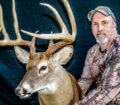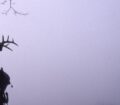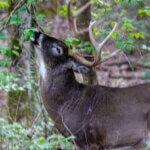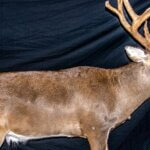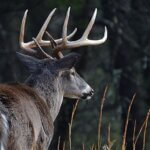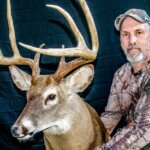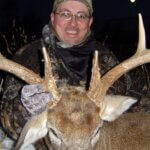Editor’s Note: Michael Perry of Vinemont, Alabama, a longtime, successful public-land deer hunter who’s taken more than 79 bucks on public lands through the years, with 38 of them being 8-pointers or better, explains, “My trail cameras are an integral part of my scouting program.” But Perry doesn’t use trail cameras like most deer hunters do. He’s only taken four bucks that he’s seen previously on trail camera pictures before he’s taken them. Perry says, “Most of these bucks I’ve taken, especially the most mature bucks, I’ve never seen before I’ve released my arrow or squeezed my trigger. However, my trail cameras have told me the trails are where those mature bucks are most likely to be.”
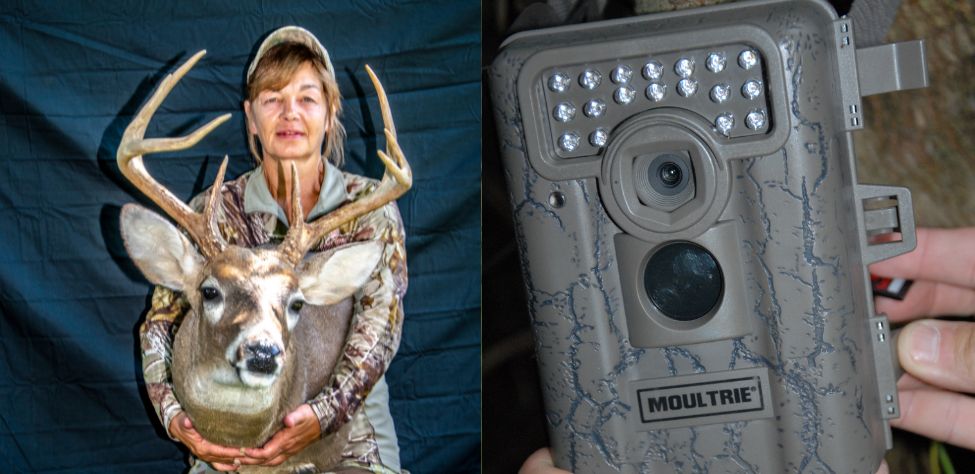
I like three different kinds of trail cameras. I started out using Stealth trail cameras, and I still have a few of them. Today, I use Browning Strike Force cameras because they cost about $100 each, are only about 4 inches tall, and can be hidden easily. Their batteries can last for a year, and I’ll set them to take 6–8 short bursts with a delay in between pictures.
Recently, I started using some of the Tactacam REVEAL cameras. I like those because you don’t have to go to those cameras and check them until after the battery dies. These cameras send pictures to your cell phone. However, you must know that you have a cell phone signal where you place your camera for this function to work.

One of the biggest benefits I get from the trail cameras that send pictures to my phone is that they also tell me how much battery life each one of those cameras has. That way, I don’t have to go to that trail camera and check it until the batteries are completely dead. I can also set the camera up to send me a picture every day. Then I know whether the camera’s still working or not. Or, I can send a signal to that camera to take a picture that day and then turn that feature off when I’m confident it’s doing the job it was made to do. Then, I don’t eat up the battery life that powers the camera.
Over the years, I’ve learned that if you go to your trail cameras too often, the deer will pattern you and determine, based on the amount of scent you’re leaving, where your cameras are located. I believe that the less the deer know about me and where I’m hunting, the better my odds are for taking older bucks. That’s why I never use my cameras for in-season scouting. Instead, I use them to learn where to hunt during the next deer season.
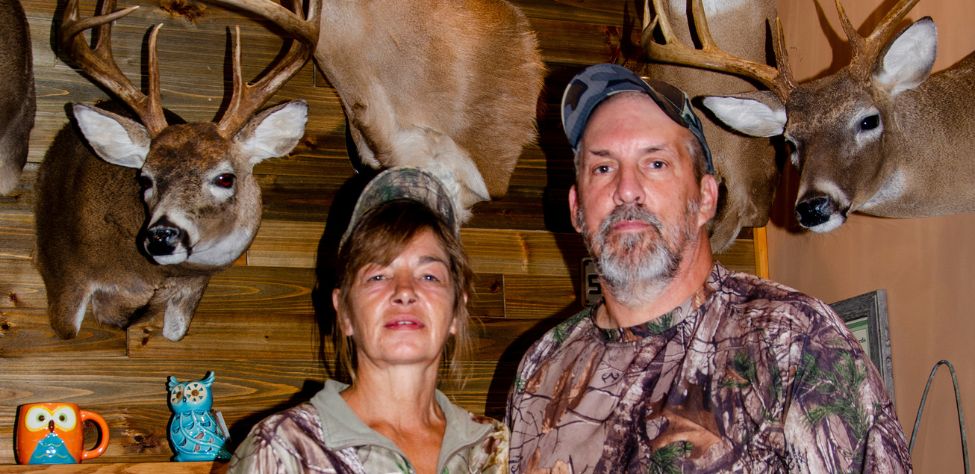
Once I learn that older-age-class bucks are using one of the trails I’m monitoring with my camera, I may check the nut trees I’ve already marked to see if they’ll produce acorns for the upcoming season. Not all nut trees yield acorns each year. Then, when I hunt in the early bowhunting season, I’ll know where I should more than likely put my tree stand for a productive place to hunt. I want the buck I take to be relaxed and concentrate on feeding, not looking for danger, to improve my odds of taking him. I put my trail cameras in places where I think an older-age-class buck that I’ve never seen, either when I’m hunting or on my trail camera pictures, may show up.
One advantage I have is that in my home state of Alabama, as I‘ve mentioned before, five different ruts have been documented at various times during hunting season. I hunt the pre-rut and rut on four WMAs with their four different pre-rut and rut dates throughout the year. I have trail cameras set up in each of those WMAs all year long.
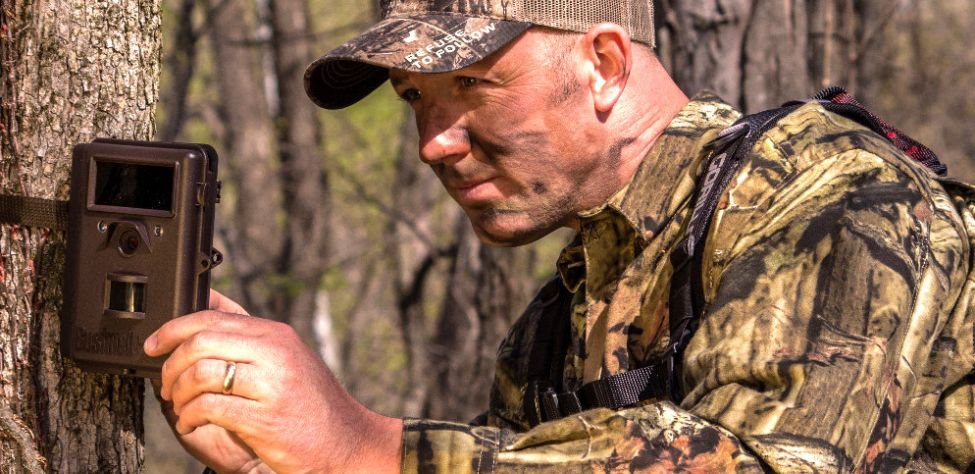
In 2021, I put a new camera out in July, about 1/2-mile from where I was hunting, and didn’t check it until February 2022, after deer season had ended. That camera provided pictures of two or three really good bucks I’d never seen. I know for sure that these bucks are still alive. I plan to hunt that region during the upcoming deer seasons in the next few years.
I’ve learned that one of the most difficult things to do is target a particular buck at a specific place and time. However, I was able to do that in the 2021-2022 deer season, when I took the biggest buck that I’d ever taken—a 6-1/2-year-old, 225-pound, 18-point public land buck that measured 195-6/8 inches with 14 g2s and 6-inch bases—and was the biggest buck taken with a muzzleloader ever in my home state of Alabama. But I’ve learned that that’s really a rare thing to happen.
Trail cameras have increased my odds of taking mature bucks. But once again, I don’t use them to get the same information that most other hunters do.
Looking for more content? Check out our YouTube channel and watch “Scouting – How Much Should You Do, Compared to Hunting?” by John E. Phillips.
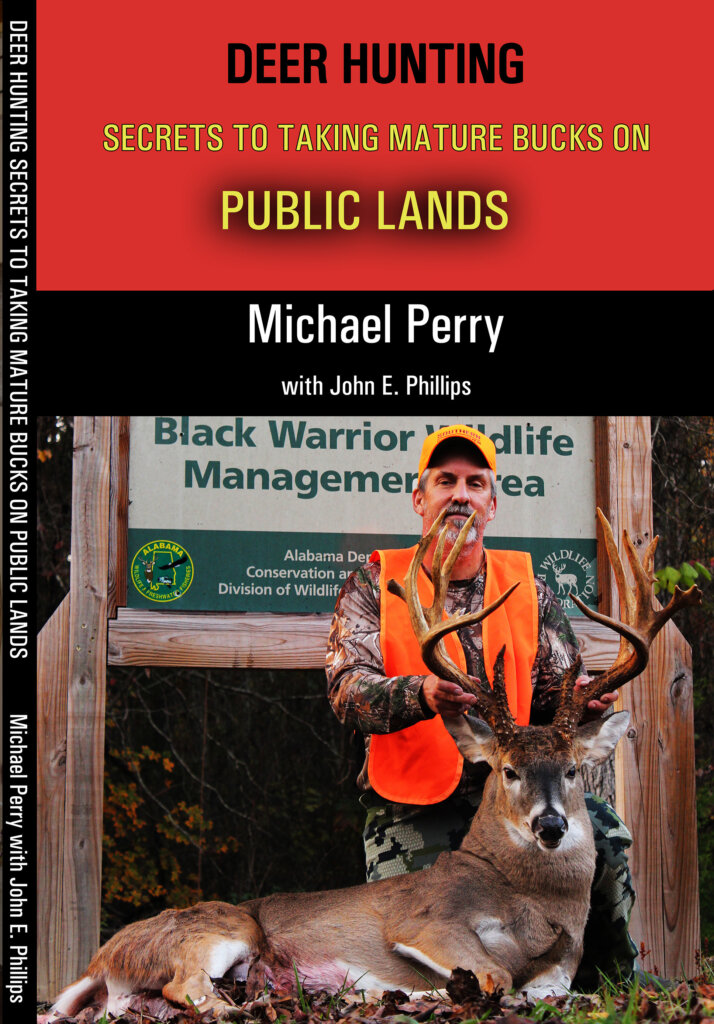

How to Hunt and Take Big Buck Deer on Small Properties
In this book, you’ll hear from 14 hunters who either have gained permission or leased properties as small as six acres to as much as 250 acres, and how they consistently take older-age-class bucks off these little lands.
VERSIONS: AUDIBLE, KINDLE & PRINT

Jim Crumley’s Secrets of Bowhunting Deer
Using a black magic marker and a gray work jumpsuit, Jim Crumley of Buchanan, Virginia, drastically changed the nature and purpose of hunting camouflage when he created the first sportsman’s camouflage – Trebark. Crumley’s love of bowhunting and his desire to be more invisible changed hunting clothing forever.
In this hunting guide, he shares the wisdom that he’s learned throughout his lifetime about how to be a hunter, how to find a deer lease, how to scout for deer, and more.
Special features include how to:
- Have a magic 60 acres to hunt
- Decide the best equipment to use
- Find deer year-round
- Locate land to hunt
- Know the best place to put your tree stand
- Get bucks within bow range
VERSIONS: AUDIBLE, KINDLE & PRINT

How to Hunt Deer Like a Pro
How do you know if the land you hunt has a trophy deer on it? Wildlife manager Bob Zaiglin, of Uvalde, Texas and Jim Crumley, the father of modern-day hunting camouflage, tells you how to find out. GPS can make finding and taking that trophy buck easier. This hunting guide will teach you how to hunt big bucks where no one else can find them, how to call deer, and how to become versatile as a deer hunter, so that if one deer tactic doesn’t work, another one will.
In the chapter, “How to find Bucks at Scrape,” Dr. Keith Causey, retired professor of Wildlife Science at Auburn University, describes the best way to hunt a scrape.
Brad Harrison of Neosho, Missouri, is a nationally-known videographer, professional deer hunter and master at calling deer. Another master is Will Primos of Primos Game Calls. These two experts will tell the best deer calls and when to use them in this book.
And for over 20 years, Bo Pitman, lodge manager of White Oak Plantation, has been studying deer movement patterns. He explains what types of conditions are best for predicting deer movement.
VERSIONS: AUDIBLE, KINDLE & PRINT

Deer hunting and deer hunters are drastically changing each year. To learn new techniques for hunting deer and have more places to hunt, I’ve interviewed some of the best deer hunters in the nation and share their tactics in How to Hunt Deer Like a Pro: Volume II.
In Chapter 10, Jacob Lamar tells you his tactics for consistently taking older-age-class bucks on public lands in several states. Chapter 11, Bob Walker explains how to find places on public lands where you can hunt that 99 percent of the other hunters never have considered hunting. The Bonus Chapter with David Ramey tells you how, where, when and with what equipment to take big Kansas bucks on public lands by hunting in 100-degree weather when others won’t hunt.
Chapter 13, Mark Drury, his family and his guests take mature bucks every season by having more small places to hunt rather than one large property. Drury explains the strategy of having satellite farms to hunt that only may be 50-150 acres each or less. Chapter 15, Pat Reeve, who hunts far-northern states and Canada, says, “I don’t like hunting for mature bucks until the weather is 20 degrees or less.” Chapter 4, Dr. Larry Marchinton says that funnels are the most-reliable stand sites to hunt for big bucks and tells why.
VERSIONS: AUDIBLE & PRINT

